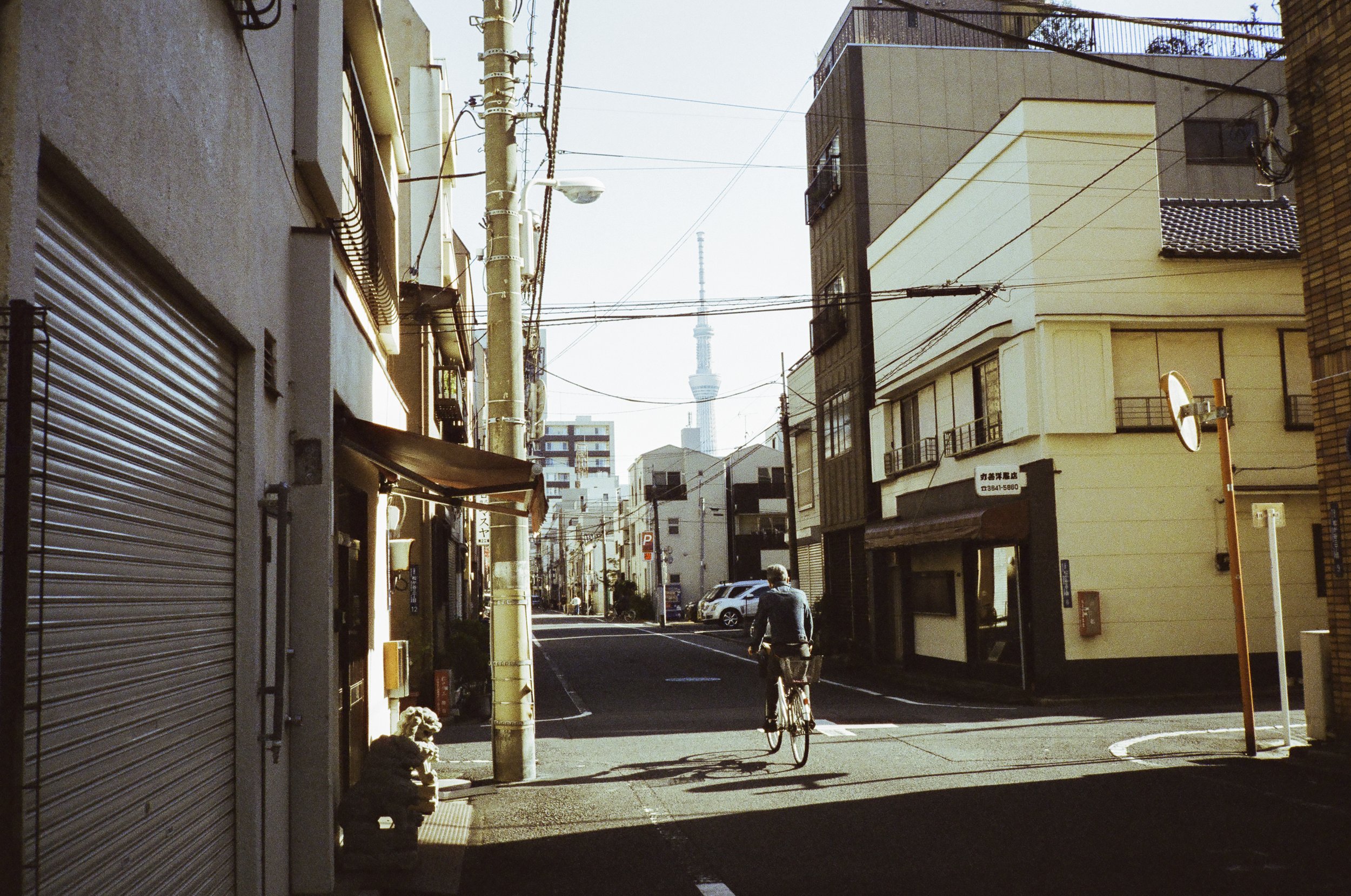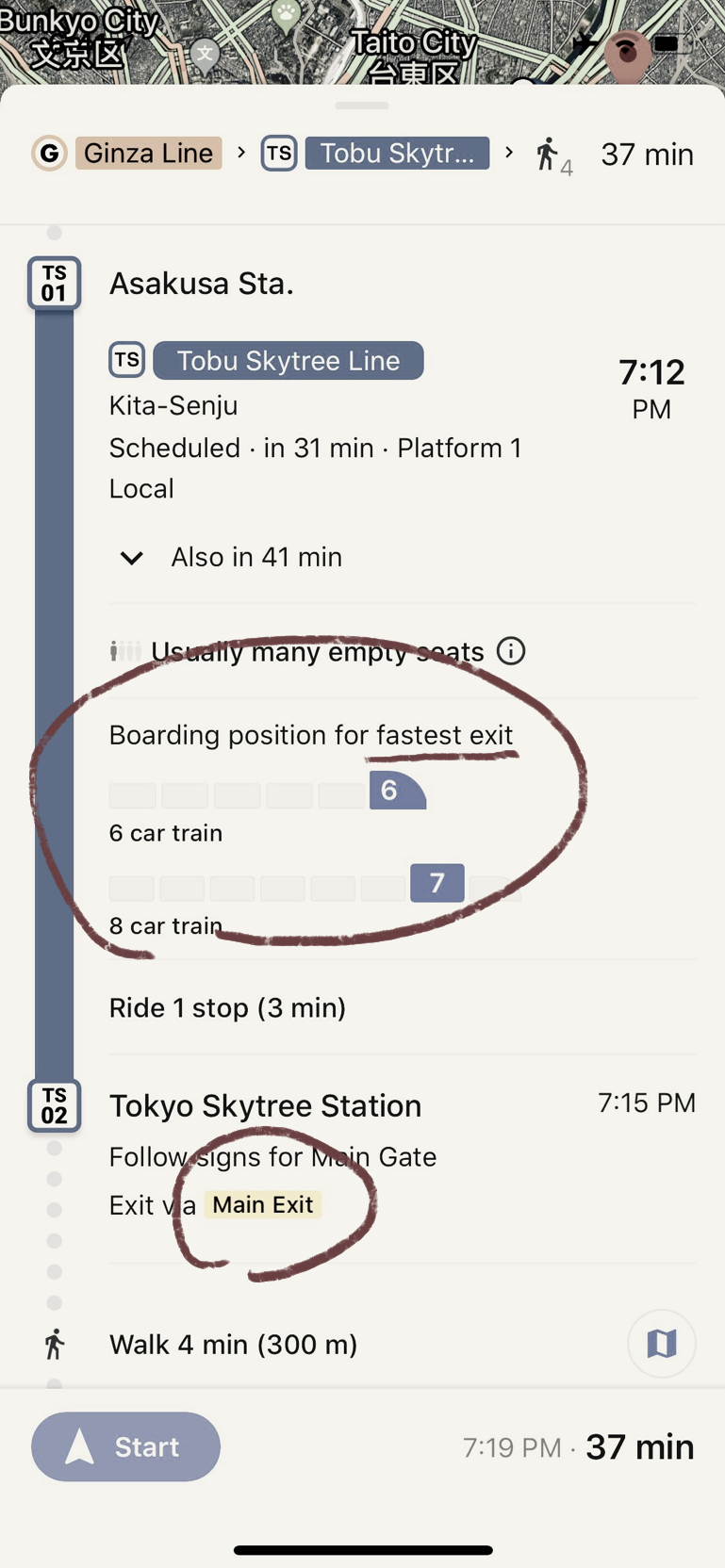First-timer travel advice to Japan.
As you prepare to immerse yourself in the Land of the Rising Sun, let this guide be your companion. With a blend of practical insights that will save you time, and cultural awareness that show respect for all the nuances that define Japanese society.

Navigating Electronic Payments
Get a Suica or Pasmo card - either on your smart phone or physical card from the train stations. It’s a rechargeable smart card that you tap on card readers and it can be used on trains, buses, taxis, konbinis, and even some vending machines.
Tokyo's public transportation system is efficient and convenient, and an IC card will make it even easier. This will save you the hassle of purchasing individual tickets for each journey, even transfers, and you can easily top up the card at any station.
Pocket Wi-Fi and E-Sim
Purchase an e-sim or rent a pocket WiFi device for seamless connectivity. If you are staying for longer than 2 weeks, Mobal e-sim may be a better option for you.Numerous rental services are available at the airport or can be booked online in advance and delivered to your hotel.
Book a Rail Pass in Advance
If you’re traveling to multiple cities in Japan, you might want to look into getting a JR Pass. The Japan Rail Pass is provided by the Japan Rail Group and only available to tourists. They allow you to freely travel on any JR Line for 7, 14 or 21 days and will save you a lot of money and hassle of buying new tickets for every trip.
If you’re in Tokyo and only visiting Kyoto for example, it may not be worth it. Simply book your round trip ticket through SmartEx or just purchase at any JR station when you arrive. Tickets rarely sell out, for reference, I purchased my ticket in person the evening before my departure during peak cherry blossom 2024. You may not be able to sit together with your travel partner, but the times are so frequent and there is a lot of flexibility.
Learn Basic Japanese Phrases
There are countless ways to learn a language. I recommend the Human Japanese app, iTalki for online lessons with real teachers, language books such as Japanese from Zero and Genki 1, and JapanesePod101 on Youtube.
Japanese is a really exciting language to learn. Once you get the basics down, it’s just piecing together the right particles and next thing you know - you’re forming a sentence! Of course the Japanese don’t expect you to be fluent, but they truly appreciate any effort. So I highly recommend learning basic words and a couple sentences like, where you’re visiting from, or complimenting a chef when you enjoyed the food.
Note the common phrases in a Notes app on your phone - you will be referencing them often. The more comfortable you get with these phrases before your trip, the better experience you’ll have. Here is a helpful start:
Ohayou gozaimasu - Good morning
Konnichiwa - Good afternoon
Konbanwa - Good evening
Arigatou gozaimasu - Thank you
Onegaishimasu - Pretty please/ do me a favor. I say this word often to be polite, like when getting the attention of a waiter or sometimes in place of yes or hai.
Sumimasen - This word has a couple different meanings, both “excuse me” and “sorry for the trouble.” Let’s say you told the taxi driver to wait a few more minutes for your partner to arrive, you can say “sumimasen!”
Ja ne! - see ya! an informal goodbye often exchanged with friends.
When entering a restaurant
Yoyaku shiteimasu ka? do you have a reservation ?
Yoyaku shite imasu - i have a reservation
nanmei sama desuka ? how many ppl?
hitori desu - i’m alone
futari desu - we are two people
san-nin desu - we are three
yo-nin desu - we are four
eigo menyu, arimasu ka? - do you have an english menu?
osusume wa arimasu ka? what do you recommend?
kore wo kudasai - i’ll take this please, while pointing to the specific menu item for example or item in a case.
sore wo kudasai - i’ll have that please, while pointing to something behind the counter.
ijyou de - that's all, when completing your order
okaikei onegaishimasu - the check please
gochisousama deshita! thank you for the meal!
oishikatta desu! This was delicious!

Japanese Etiquette
Show respect to the culture by adopting these simple etiquettes. They will go very far.
Bowing is a deeply ingrained cultural practice and is not reserved for just special occasions, but is a part of everyday interactions. It's common in greetings, farewells, expressions of gratitude, and apologies. The depth and angle of the bow convey the level of respect or formality in a given situation. A deeper bow is generally considered more formal and respectful. For everyday moments like entering a hotel or restaurant, a gentle head nod down is casual and still shows respect.
Be aware of the energy in different spaces. For example, a rush hour train will be nothing but silence, so refrain from talking loudly. On the other hand, an izakaya at night will be loud and full of laughter. Show respect and adapt to the local culture.
photo by Japan Yugen
Dining etiquette. There is so much to know about table manners in Japan, but the Japanese never expect you to know everything. Best advice is to keep your space neat and never place your chopsticks upright in a bowl. Sticking your chopsticks straight up in a bowl of rice or empty ramen bowl is considered disrespectful. It resembles a funeral ritual where rice is offered to the spirits of the deceased. Instead, place your chopsticks neatly across the rim of the bowl or plate. Some restaurants will have hashioki, or chopstick rest.
Oshibori manners. An oshibori is a hot or cold towel given to you at restaurants, cafes, and bars. It’s not meant for rubbing all over your sweaty face on a hot day, but to wipe fingertips and lips when eating. Never leave it in a messy ball after eating, always fold it or roll it back up.
Carry Yen and a Coin Pouch
Although credit cards are widely accepted in urban areas, it’s still important to carry cash, especially when exploring markets, street vendors, or smaller eateries in less touristy areas.
You will quickly accumulate a lot of coins. There are coins from ¥500 to ¥1, which is less than one single penny in USD. Carry a small coin pouch and you can also re-fill your IC card with coins at a station.
You’ll notice a cash tray at every business establishment. It is meant for easily transferring loose coins all at once to the register, but also to avoid any awkward hand touching.
Consider an International Currency Card
I recommend setting up an account and ordering a physical card with Transferwise. It operates on a peer-to-peer system, matching users who want to exchange currencies at the mid-market rate, without any hidden fees. TransferWise offers several benefits. One, it provides a transparent and cost-effective way to exchange currency, allowing travelers to avoid hefty fees charged by banks and currency exchange kiosks. Two, TransferWise offers fast transfers, enabling travelers to quickly access funds in their destination country. Additionally, TransferWise's multi-currency account feature allows users to hold and manage money in multiple currencies, making it convenient for travelers who frequently visit Japan or other countries.
Indoor Shoe Culture
In Japanese homes, ryokans, temples, even some restaurants and shops, it is customary to remove your shoes before entering. You will notice a small area called a genkan, which is almost like a mini indoor patio separating the “outdoor” and indoor area of the home or establishment.
Wear socks without holes and if you are wearing sandals, pack a pair of thin socks. I’ve been turned away at temples because they don’t want bare feet touching their original floors or communal indoor slipper for sanitary reasons.
Almost all of these establishments with a no shoe policy will have a basket of communal indoor shoes available. Some have shelves for storing your outdoor shoes, while some have plastic bags available for you to carry your shoes in the temple and to still have your shoes readily available for exploring some of the outdoor garden areas.
Even the restroom will have a separate pair of slippers to avoid transferring any toilet bacteria on tatami mats and other flooring. If you see a pair of toilet slippers, always remove your indoor slipper and use the toilet slipper.
Keep in mind most fitting rooms also require shoe removal before entering the dressing room.
When in doubt, just observe what others are doing. If you see an area for storing shoes near a doorway, it’s probably safe to say you should remove your shoes at the door. Neatly line them up with the toes facing the door so it’s easier to put on when leaving, and put on the indoor slippers provided.
Useful Apps
Download Google Maps, Google Translate, and for auto-translating a Japanese website or online booking, Google Chrome. The Notes app is useful for saving frequently used Japanese phrases and other trip notes. Smart Ex is helpful when booking Shinkansen tickets. Uber works well in bigger cities across Japan. The Human Japanese app was one of the better Japanese language learning apps and offered the best method to quickly learn the basics. DeepL was a daily resource for me when crafting emails in Japanese or translating a larger document. Many of my native speaking friends were impressed by the natural translation ability.
Pro tip when using Google Maps: make note on the car number and exit name for a faster exit - this will be especially helpful during rush hours.
For packing specific tips check out our Instagram post











